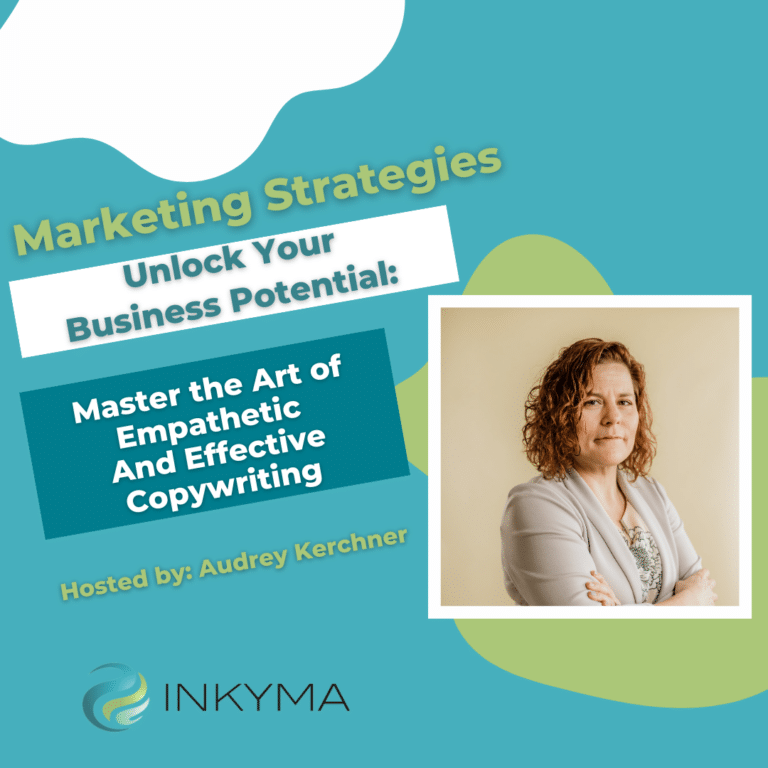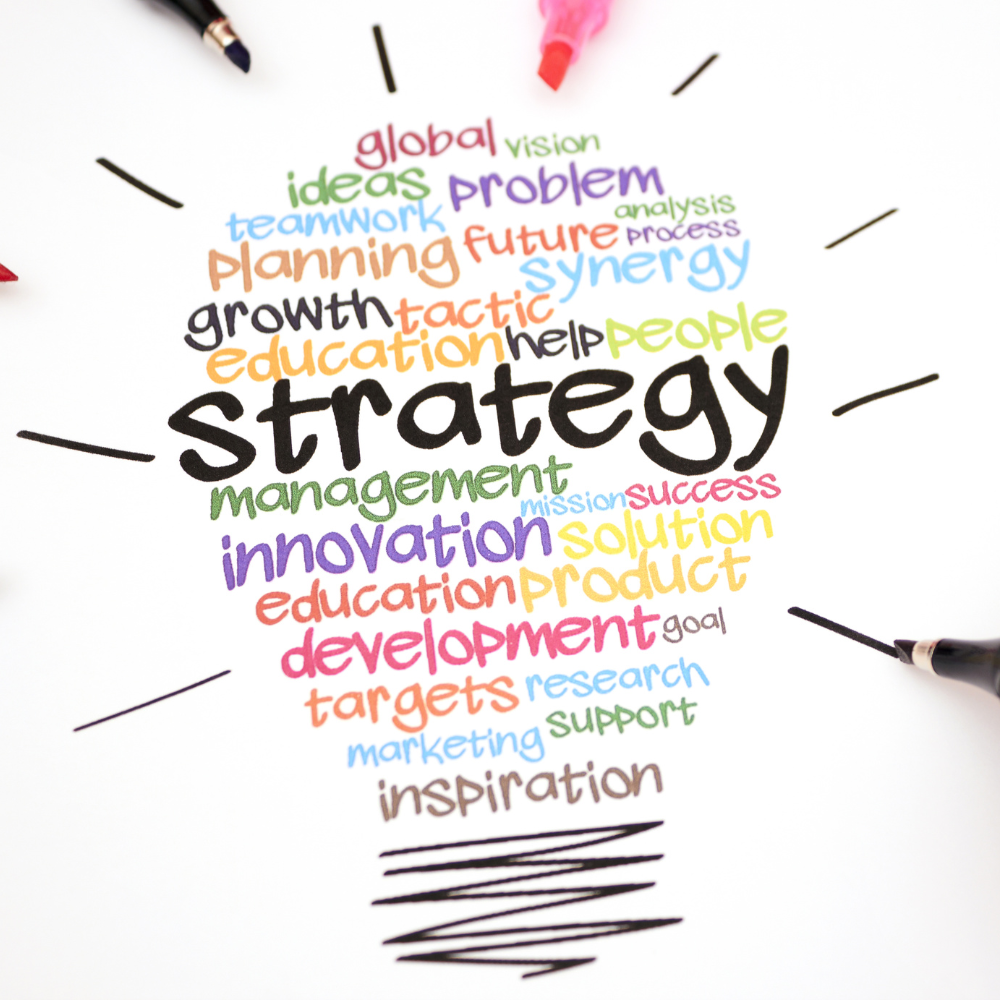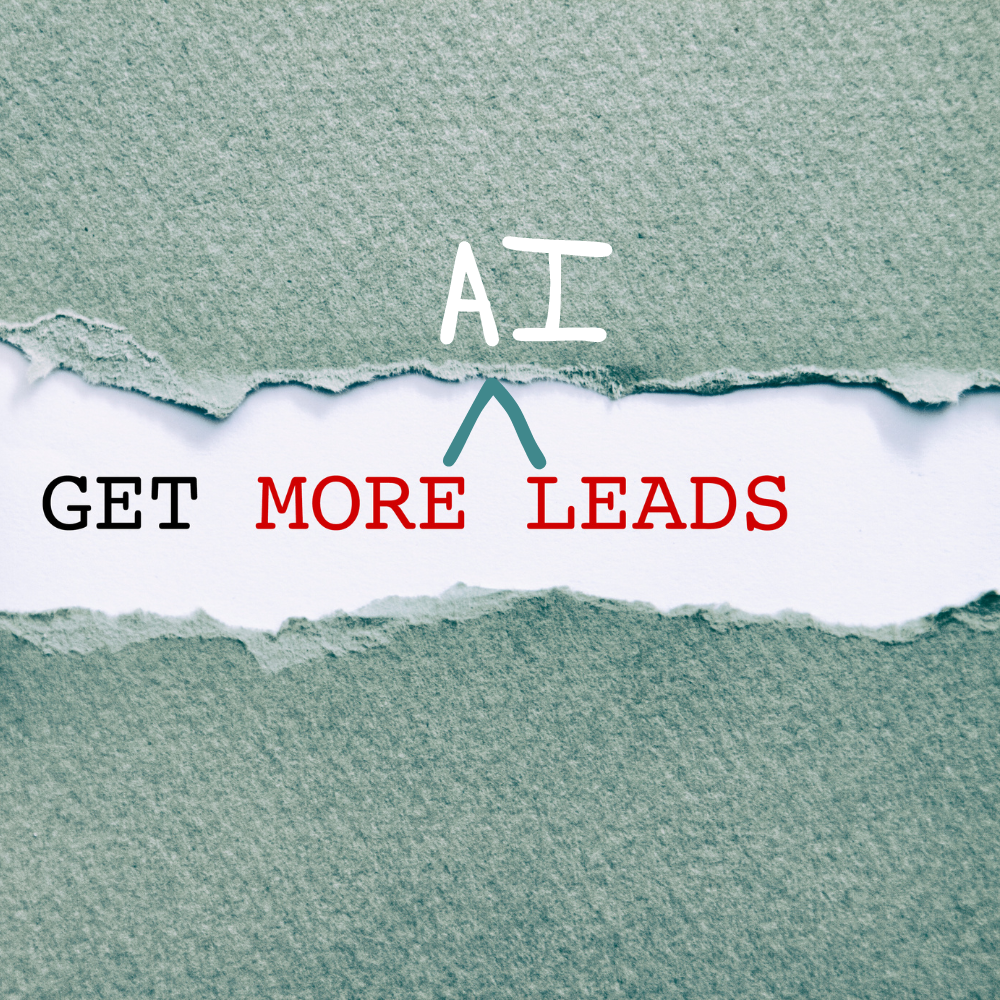Empathetic and effective copywriting is the secret sauce to driving customer engagement and business growth. In this episode, we explore how tuning into your audience’s internal problems and addressing them through your copy can transform your business narrative.
We delve into the importance of understanding your audience, the role of empathy in copywriting, crafting problem-solving messages, and measuring the impact of your copy. Join us as we unlock the potential of empathetic and effective copywriting to turn your leads into loyal customers.
Links Mentioned In This Episode
Episode 37- Strong Brand Identity Part 1: The Customer
Episode 38- Strong Brand Identity Part 2: How To Talk To Your Customers For Better Engagement
Episode 39 – Strong Brand Identity Part 3: Branding Visual Identity
Episode 104 – Making Complex Ideas Simple: The Key To Small Business Marketing Sales
Love our Podcast? Buy us a cup of coffee to help keep creating for you.
Sign up for our newsletter at marketingmasterminds.co Free marketing educational content with how-to videos delivered to your inbox.
What We Discussed:
- The Importance of Understanding Your Audience
- The Art of Empathy in Copywriting
- Crafting Copy That Solves Problems
- Measuring the Impact of Your Copy
Unlock Your Business Potential: Master the Art of Empathetic And Effective Copywriting Transcript
Imagine your business is a key and your potential customers are doors, but what if I told you that many of these doors have locks that your key can’t open? What if your message your copy is not aligning with what your customers truly need or desire? In today’s episode, We’re going to explore the power of empathetic and effective copywriting, a critical tool in shaping that key to unlock as many doors as possible.
We’ll dive into how understanding your audience’s internal problems and addressing them can help you connect more deeply, solve their issues, and ultimately drive your business forward. So before we get into the episode, let’s talk about a little bit of housekeeping.
For every one of the podcast episode, we have a show notes page on the website, inma.com. I nnk yma.com. There I may have product recommendations, I may talk about other articles or other podcast episodes throughout this. And there’s a rough transcript there, so definitely go check out the show notes.
There’s always a lot of extra good information in there. Now, when I do mention products, many times we are partners with those products because we use them every day in our marketing and in our clients’ marketing. So I want you to have access to what we as professionals use. Now as affiliate partners with some, many of these, if you use our links, we do get a little small sales commission.
Uh, usually a couple dollars, maybe $5. Um, so using our links is really helpful because that revenue helps us keep creating this podcast for you. Alrighty, so let’s start with talking about the importance of understanding your audience. So in order to create that impactful content that I’m gonna talk about and I’m alluding to, is you have to understand your audience.
And yes, you need to know their demographics, who they are, where they are. But what you really need to understand deeply are their problems, their needs, and their desires. This is gonna make it more effective for you to communicate with them. And out of problems, the one that we wanna focus on the most is their internal problem.
Not just their problem externally related to your product or your service, but those deeper fears, aspirations, or desires. Right? There’s, there’s different options there. And identifying and speaking to those will actually help you significantly influence their decision making process. So let’s talk hvac, right?
Because all of us, um, at a home will have a furnace, air conditioner, something like that. And so let’s say we talk about air conditioners. Now the external problem is I wanna stay cool, I want to be comfortable in my home, the internal. Um, aspiration or desire is that a cooler home will keep people calmer that are in the house.
So if you have a lot of kids, they’re gonna be less agitated. Um, spouses won’t fight as much. There are statistics out there that actually show that heat actually causes more frustration and anger. So by talking to that internal. Issue or desire to keep the kids happier and calmer and satisfied during the summer is really huge.
The other one is, um, sweating less For all of us women out there, we don’t, unless we’re working out, we really don’t wanna sweat. We don’t wanna sweat while we’re walking around the house. We don’t smell, we don’t have sweat marks. So that’s a way to impact that internal want and need.
So identifying these internal wants, needs and problems, you have to engage in some type of customer research. So if you’re an established business, you can talk to your best existing customers. That could be, you know, think about that client that you have, where you want four or five more of ’em. Ask them questions.
Why did they choose your brand? Um, what. Internal problems are they having that you have solved? You can. And if you’re a brand new company, don’t have a lot of customers, maybe you haven’t found that perfect customer. You can do surveys and interviews of people that you want to become customers. So you’re asking them for help to help your business, not trying to get them be to become a client.
Not yet. You might just by the interview process in, um, tweak and, um, their thought pattern. About you and your business and what you wanna do. So don’t sell during that process, but ask questions. Engage them in that, um, dialect of like, Hey, why would you choose this service? Um, oh, because I want it this way.
Well, what about internally? Like, do you have aspirations for your family yourself or anything like that? And really dive deeper into that. So I wanna share a cool little case study with you. Just to kind of wrap this concept up, and Apple is a really great example of a company that understands their primary audience.
They know that their audience values interface innovation, um, sleek design, and a user-friendly interface. So when they launched the iPhone in the very, very beginning, way back in the day, um, They had a very simple copy message and it’s, this is only the beginning, meaning this is really state of the art right now.
You could see that when the iPhone first came out, but then what they were hinting at is that it’s just gonna keep getting better. So come on this journey with us. And that is really the message they were trying to send, so they didn’t have to write paragraphs of it, they didn’t have to do a lot of videos.
It was just this short, impactful piece of copy. All right, so now let’s talk about the art of empathy in copywriting. So what is empathy? From our perspective, it’s the ability to understand and share the feelings of others, and it’s really, really powerful in copywriting. It lets you tap into your audience’s emotions, and when you do that, you build connection.
So when you’re doing that to tap in, you’re showing and you’re telling them that you understand. Who they are, what they need, and that your product actually supports that. And many businesses just kind of dance around. They don’t wanna say it. They, they, they feel a little uncomfortable speaking empathetically.
They’d rather talk about themselves. But in reality, what you need to do is talk about that customer and what they need and how you can help and serve them. And then with that empathy, like what we talked about, you want to address those internal problems. Yeah. It might feel a little uncomfortable talking about keeping the kids calm or, um, not sweating as much.
But the nice thing is, is this is copy that’s going on your website, and then if you have a third party company like ours that writes it for you, it feels a little less weird. And. Awkward, but by showing that you really understand them and that you care about their issues, you’re gonna earn their trust.
So really what it’s all about is you putting yourself in your customer’s shoes and then using language that resonates with them. But it’s gotta be very clear and simple. Don’t use industry jargon more. About, um, clear, simple language. Definitely go take a listen to episode 1 0 4, where I break that down completely about what to use and what not to use.
So now I have another example for you, and it’s actually the shoe company called Toms. They do a really great job of empathetic writing. Um, They also understand their customer, and their customer cares about social causes and giving back. And so they created a program called the One for One campaign, which if you buy a pair of shoes, they donate a pair of shoes, and that is really the copy.
So it says, with every product you purchase, Toms will help a person in need that empathetic language right there, help a person in need. Just like bull’s eyes, their target markets need to support social causes and give back. And so in their mind they’re thinking, well, if I have to buy shoes and I have to buy shoes, right?
We all have to buy shoes. Why not buy shoes that are gonna help someone else out as well as myself?
So now let’s talk about crafting that copy. That solves problems, right? Because understanding it and then actually crafting it, they’re a little bit, they’re two different things.
So in generating this copy, empathy, keeping it clear, all of those good things, but you, you wanna addresss that internal problem, how your product solves it by showing them that it can change their lives. We call this aspirational, um, completion, right? And so what you’re doing is you’re telling them and you’re showing them exactly what is gonna, what things are gonna look like verbally after they’ve used your product.
So a clear statement and a problem example is struggling with time management. Our app helps you organize your day efficiently. It’s just that simple, so it’s not talking about all of the bells and the whistles. We haven’t got to social proof yet or anything like that. You start with a very simple statement that grabs them, right?
Struggling with time management. You’re asking a question. And what happens when we ask a question and internally they say yes. All of a sudden they’re open to the possibility of the information that comes next. And in, in that sentence, it’s our app helps you organize your day efficiently. So it hits two buzzwords there organization and efficiently.
And then the internal problem is that, yeah, we struggle with time management. We don’t wanna say we struggle with time management, but we do. So instead of saying, oh, here’s an app that’s going to, um, Let you take notes and let you put pictures in there and let you do all these things, right? Those are all the feature sets.
You start with how you’re solving the problem. So again, I’m going to, um, reference you back to episode 1 0 4 because the last thing you wanna do is put information in there that is, um, internal speak to what you do. So, you know, something like an app is very technical and you don’t wanna use technical, uh, terminology.
So now I have another example for you, um, just to drive that home. Is there is an app, a note taking app, right? That’s what they call themselves is a note taking app called Evernote. And they do a really good job of writing this type of copy. They understand the struggles of their target audience, and so their copy reads feel organized without the effort, which I think is brilliant.
It actually took what I created before as a, um, good example, and it actually distills it down, feel right. Um, you wanna feel organized without the effort because we know trying to get organized can sometimes be a daunting task and require a lot of effort and willpower. But what they’re saying is that, no, it’s not gonna take a lot of effort.
We’re gonna take care of that for you. And then after you start with a statement like that, then you can tell them all the examples of how something like an Evernote note taking app will take care of it. So now that you understand the concept of. What this type of copy is, how you can create it doing your research.
You wanna also think about measuring the impact of your copy. And this is just good marketing 1 0 1. Anytime you create a marketing campaign, you wanna measure it to see if it’s doing what it’s supposed to do. Because even if it’s free for you to create, it’s gonna take you time and effort and you wanna understand the R o ROI return on investment of that time and effort to make sure that it’s working.
So that’s why you wanna track and measure it, and you do that with engagement, conversion, and customer feedback in, in this instance. So if you’re creating copy and you’re putting that copy on your website, in your digital ads, in your email, on your social post, how you see if it’s actually working is, are they engaging with it?
Conversion would be. Things like the click through rate on your call to action, or if they clicked on your telephone number to call, or if your phone was actually dialed or if they clicked on one of your call to action links. And those are known as like KPI indicators, key performance indicators. And so that’s really what you wanna track.
And then you wanna be ready to adapt your copy and all this other, um, In all these different places if it’s not working. So understand where your baseline is today. Make your changes to your copy in these specific places that you’re testing, and then check back in a month, two months, give it some time.
If it’s digital advertising, you can probably do it in a couple weeks and see if it’s actually made a change. So you need some before in the middle, and then after. And the other thing that you can do is if you’re not sure about one piece of copy versus another, then you should ab test your copy, meaning put some out there with copy one and put some out there with copy number two, and then see which one performs better.
So in the example of an email, if you’re using MailChimp, they will allow you to AB test copy subjects, body copy. To your audience and 50% of the audience can get, um, a and then 50% of the audience can get B. And then you’ll see open rates, click through rates, call to action, button clicks, um, between the two and see which runs better.
You can also do AB testing on your websites and then also on your digital advertising. A lot of the systems that are out there actually have that pre-set up for you.
So now we get to the point where I want you to take some action. I’ve shared some information with you. Hopefully you’ve digested it, but here are your next action steps for this. So start by identifying your audience’s internal problems again. Use a little bit of customer research, do some interviews.
Interviews, I think are the simplest way. Go have a cup of coffee and learn some information. Two or three people, I think you’d be great. If you wanna survey more people, you can send a survey out. Send a lot of them out because surveys tend to get very low response rates. So if you send us a hundred surveys out, 1% may respond.
So you’ve got about 10 people. That’s why I like doing the interview because then if someone agrees to an interview with you, you’re gonna get the information. Then you need to start practicing empathetic writing it, which is state the problem and how your product or service solves it. Start with a paragraph long and pull everything out and then reread it and then narrow it down till you’re clear and you’re concise, and it’s, if you can get it to those three words.
That’s great. Maybe you need to get it to two sentences, but you don’t want a full paragraph. Then you wanna start implementing this. I always recommend you start with your website copy, because all of your marketing initiatives comes back to your website, or hopefully they do. So your social, your digital, your email, anything that you’re doing, you’re always trying to redirect them back to the website where all of your primary call to actions are.
And website could also be landing pages too, right? So start with those. And then once your website is good, you have your basic of your copy, and then you wanna take that and actually reuse it in your outreach methods. And so don’t get fancy and don’t get different. If you found copy that works on your website, then you just wanna copy and paste that into the other places.
Because what happens is when they come from those places to the main landing page, seeing the same copy and other visuals actually helps build trust because it’s familiar. So don’t think it has to be different in every place. You actually want it to be the same. And then don’t forget to set up your measurements.
What are you gonna measure to see if this is actually working? So here are my final thoughts for you. Mastering the art of empathetic and effective copywriting is pretty challenging. Um, we, here at Incom o we have trained copywriters. Um, and not all copywriters write this way. A lot of ’em write more for blogs or stories, and so, Understanding the target audience and writing empathetically is even a deeper skillset.
So here at In Kumo, we actually, um, are trained in that we’ve, uh, trained ourselves, uh, gone through certifications in things like Donald Miller’s, um, story brand concepting, and then going through personality trainings, um, for figuring out how you write for different personalities. And then, um, All this other type of thing.
So if this is not something that you wanna do or you don’t think you have the expertise in your, um, current, uh, employee skillset, even if you have a marketing department, reach out and talk to us cuz we can augment that for you. Either help train them or actually write on your behalf that then it can be implemented.
So here at Inca Mode, we love to give back to the business community. I provide a free 45 minute consultation to talk about whatever you want to in your marketing. Could be copy, could be visuals, could be websites, schedule that time on the website. Go to inma.com i nnk yma.com. In the upper right hand corner, you’ll see a market schedule and marketing evaluation button.
Click on that and. Our, we’re on the calendar together. There’s also a contact form. On almost all of the pages at the bottom of the website. So if you’ve got a question, a suggestion for a show topic, um, definitely fill that out. Send it in. We will definitely get back to you. And then if you’re more into DIYing or you need to diy, um, Definitely sign up for our Marketing Masterminds newsletter.
Marketing Masterminds is our DIY channel. We do videos, we do articles that help you actually do a lot of this marketing stuff yourself in detail. We make product recommendations step by step on how to use those products and using them in the context of marketing, um, as a small business owner, so, I hope you found today’s episode helpful, interesting, useful to your business.
If you did, please consider sharing this. We are on YouTube. We have the podcast, we have it in, um, newsletter format as well, so you can share it your favorite way. But if you found it helpful, I’m pretty sure other business owners you know, are also gonna find it helpful. And that’s really what we wanna do is help the entire business community grow and thrive.
So thanks so much for listening and I hope you have an amazing day.



























